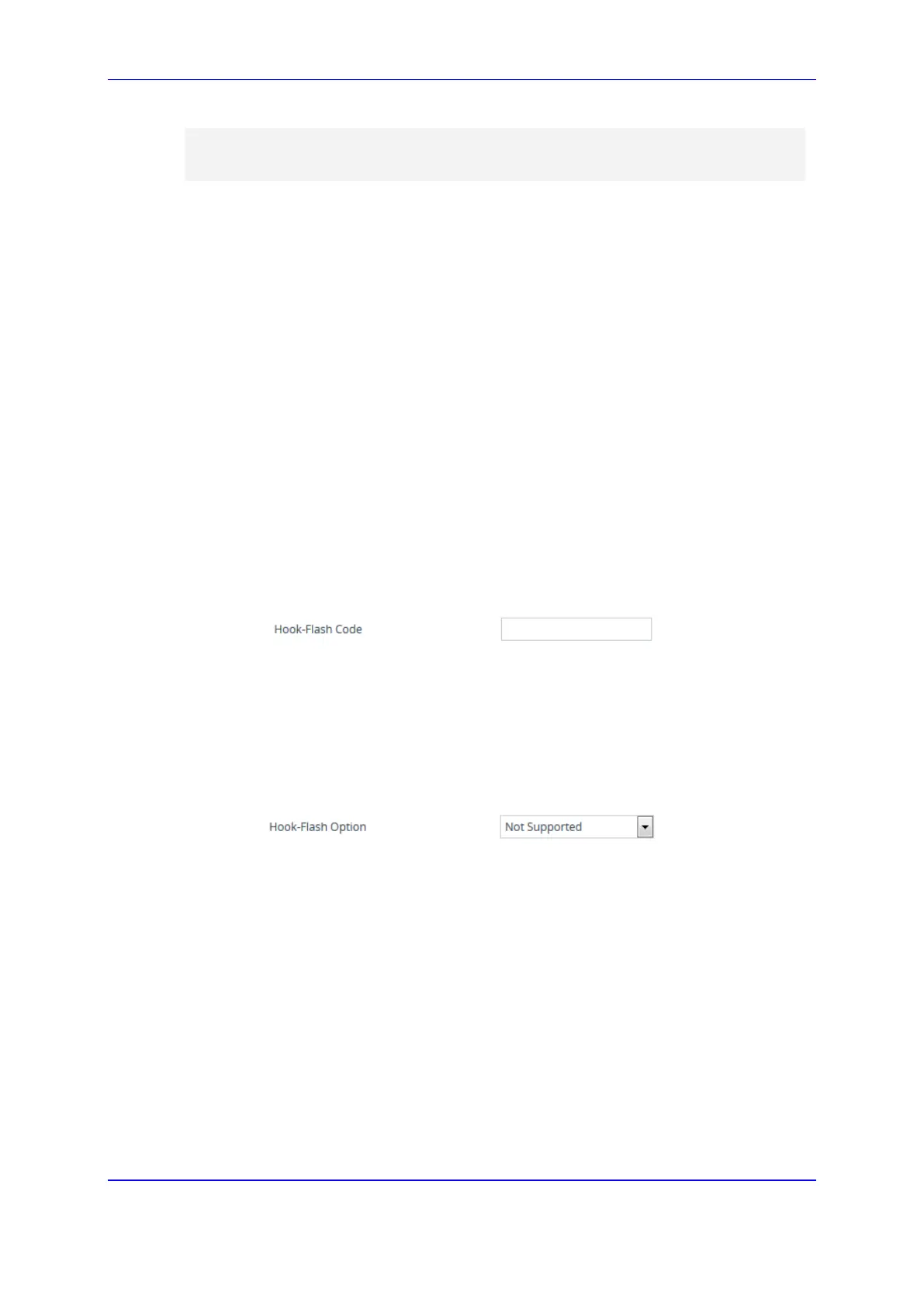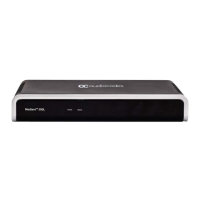Version 7.2 533 Mediant 1000B Gateway & E-SBC
User's Manual 25. Configuring DTMF and Dialing
4452eff4acb SIP/2.0
To: sip:123#456@192.168.100.214;user=phone;x-type=unknown;x-
plan=unknown;x-pres=allowed
The destination number can be manipulated when this feature is enabled. Note that if
manipulation before routing is required, the * and # characters should not be used, as the
device will handle them according to the above keypad protocol. For example, a
manipulation rule should not be configured to add #456 to the destination number. If
manipulation after routing is required, the destination number to be manipulated will not
include the keypad part. For example, if you configure a manipulation rule to add the suffix
888 and the received INVITE contains the number 123#456, only 123 is manipulated and
the number dialed toward the PSTN is 123888; #456 is sent as keypad.
To enable this feature, use the ISDNKeypadMode parameter.
25.3 Configuring Hook Flash
The following procedure describes how to configure various hook-flash features.
To configure hook-flash features:
1. Configure the digit pattern used by the Tel side to indicate a hook-flash event:
a. Open the Supplementary Services Settings page (Setup menu > Signaling &
Media tab > Gateway folder > DTMF & Supplementary > Supplementary
Services Settings).
b. In the 'Hook-Flash Code' (HookFlashCode) field, enter the digit pattern.
Figure 25-1: Configuring Hook-Flash Digits
c. Click Apply.
2. Configure the hook-flash transport type:
a. Open the DTMF & Dialing page (Setup menu > Signaling & Media tab >
Gateway folder > DTMF & Supplementary > DTMF & Dialing).
b. From the the 'Hook-Flash Option' (HookFlashOption) drop-down list, select the
required transport type.
Figure 25-2: Configuring Hook-Flash Transport
c. Click Apply.
3. To configure the period by the device for detecting hook-flash initiated by analog
interfaces:
a. Open the Analog Settings page (Setup menu > Signaling & Media tab > Gateway
folder > Analog Gateway > Analog Settings).
b. Configure the following:
♦ 'Min. Hook-Flash Detection Period' (MinFlashHookTime): Defines the
minimum time (in msec) for detection of a hook-flash event from an FXS
interface. Detection is guaranteed for hook-flash periods of at least 60 msec
(when configuring the period to 25). The device ignores hook-flash signals
lasting a shorter period of time.

